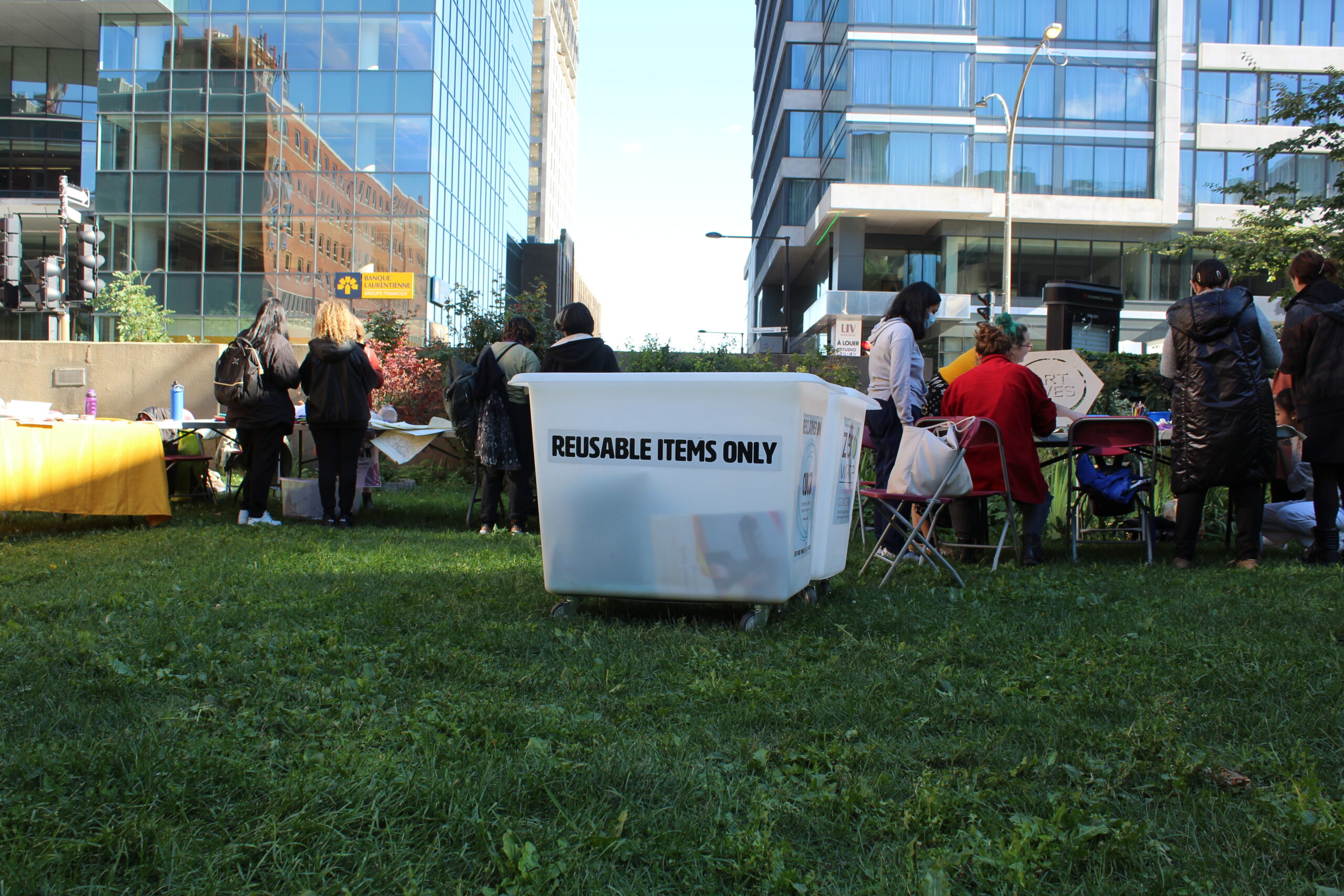By proposing events such as Art Swaps, the CSU proposes to serve as a ground for the exchange of supplies among students and the general Concordia community
On Sept. 29, the Art Swap series held its first event in the courtyard of the VA building at Concordia’s downtown campus.
“We figured that having this event in the courtyard would create the sort of traffic that this event would like to cater to,” said Sean Levis, sustainability coordinator for the CSU and co-organizer of this event.
Thanks to a collaboration with Zero Waste Concordia, Art Hives, the Fine Arts Student Alliance (FASA), and Concordia University’s Centre for Creative Reuse (CUCCR), the CSU was able to make this event possible.
The CSU decided to organize a four-part swap series building off of the Queer and Kids Clothing Swaps that happen every year during the anti-consumerism week.
The Art Swap is a space “where students are encouraged to either take the art materials that are viable to them or leave any art materials that they don’t use,” Levy noted.
These events raise awareness around the idea of exchanging, rather than spending.
“The purpose of this event is to get students on campus, exchange different materials and promote a culture of sustainability, discouraging the commercialization of specific products, encouraging gifting and trading,” Levis said.
“The whole point is to avoid buying new things and encourage this cycle of reusing and recycling and overall bring more sustainability on campus,” added Julianna Smith, external affairs and mobilization coordinator for the CSU.
“There’s been this culture of individualism with the pandemic. This is a community effort to get people to connect, have fun, and promote sustainability on campus,” noted Smith. “On top of that, a lot of these events are trying to involve students to allow them to share common ideas and feel like they belong to a space.”
Other spaces like the Art Nook offer students the possibility to make art and use available materials.
“It’s always open, it’s a free space, where people leave and take supplies, it is an ongoing art supply swapping space,” added Smith.
The Art Nook is located just behind the CSU offices on the 7th floor of the Hall Building.
Three other swaps will occur throughout the year. At the beginning of November, there will be a book swap that will feature events such as “dates with books,” where book covers will be covered in brown paper with only short descriptions to accompany them for people to pick up.
“It’s the idea of not judging a book by its cover,” Levis said. “It’s the idea of the de-commercialization of certain products.”
There will also be a seed swap in April with the Greenhouse, where planting workshops will occur.
Lastly, there will be a Black hair-care products swap in February. The workshops will be for people to be able to make their own hair-care products.
“We are creating specific themes for these events. It’s an effort to reinvigorate student life at the same time,” Levy added.
